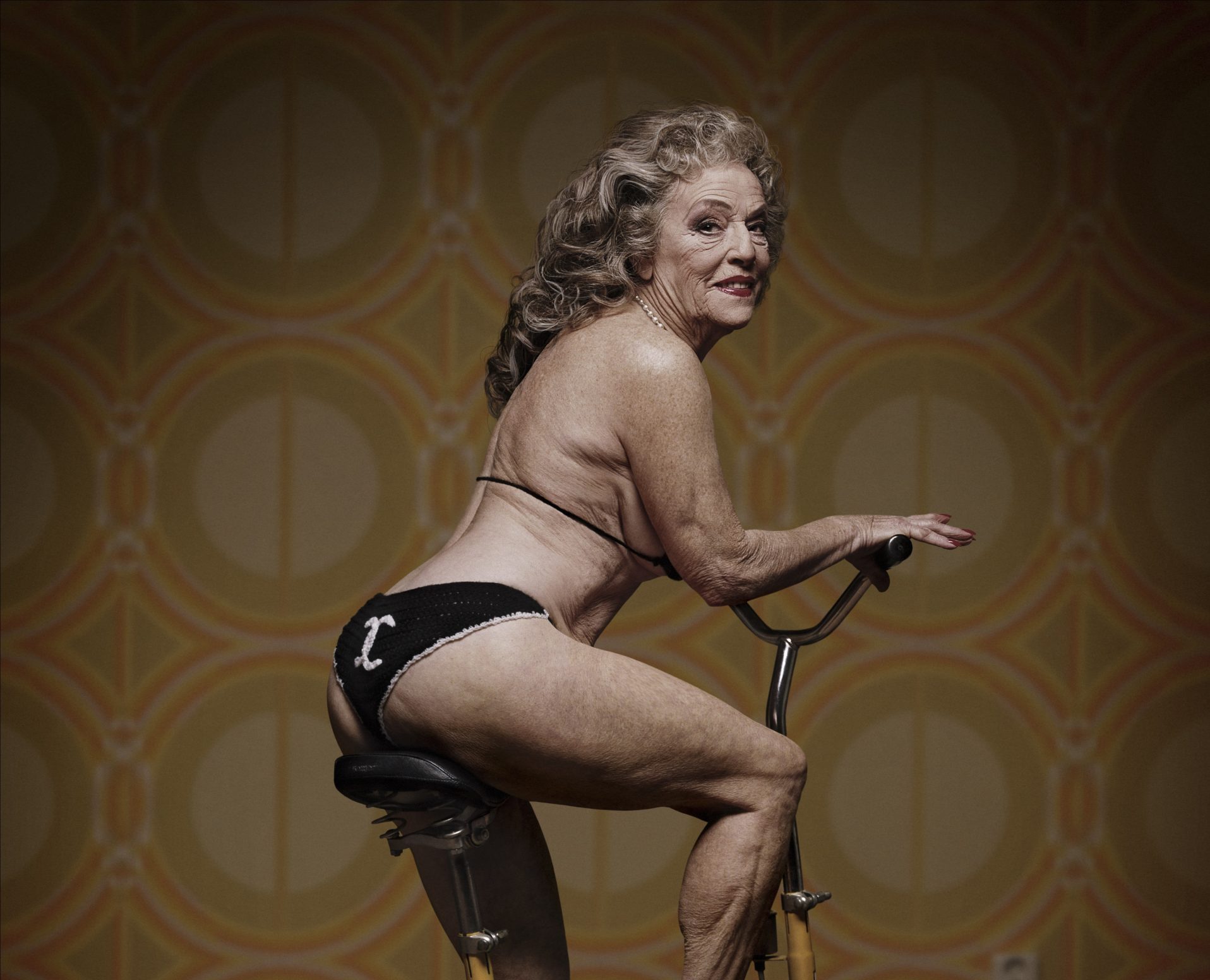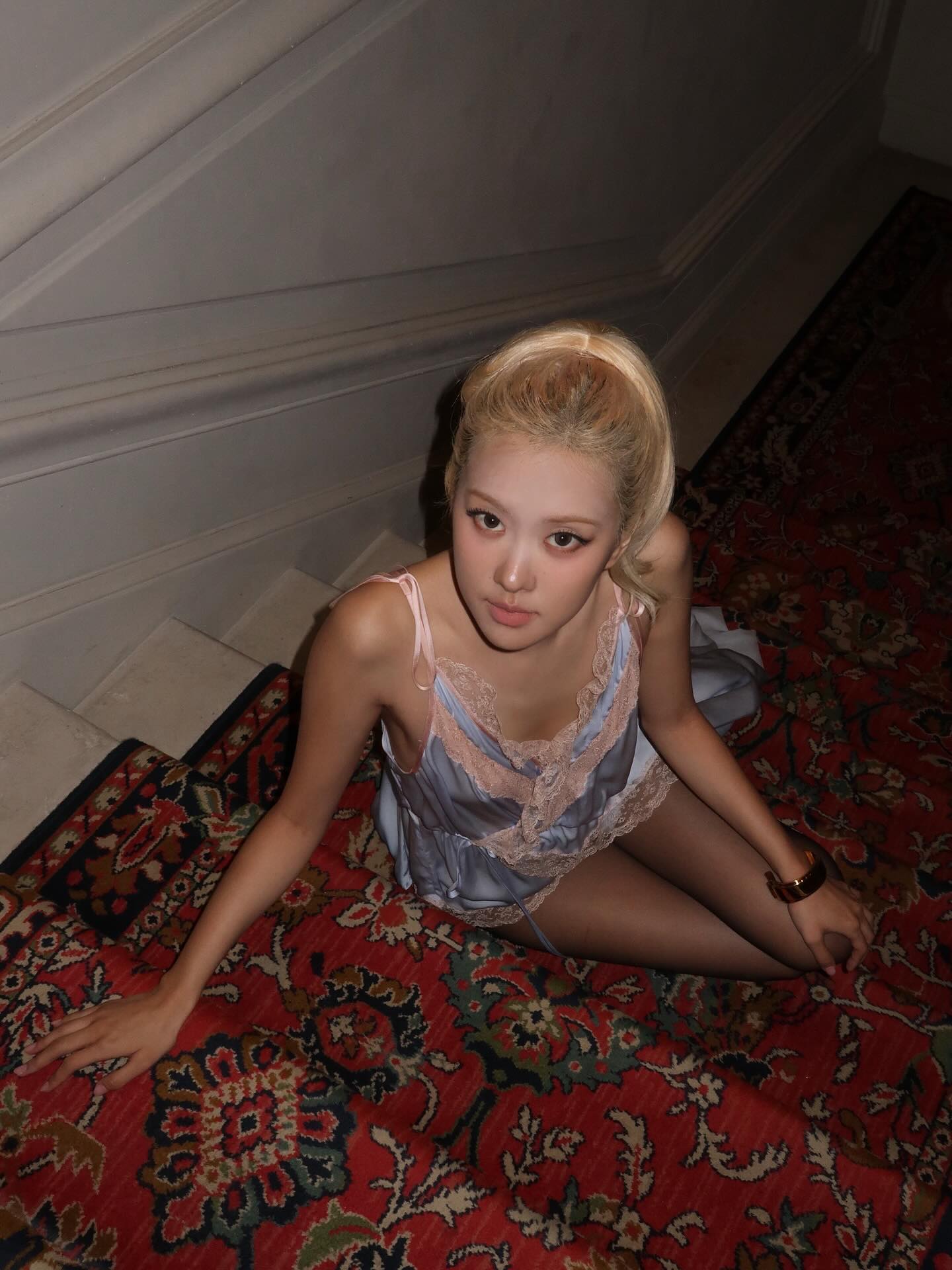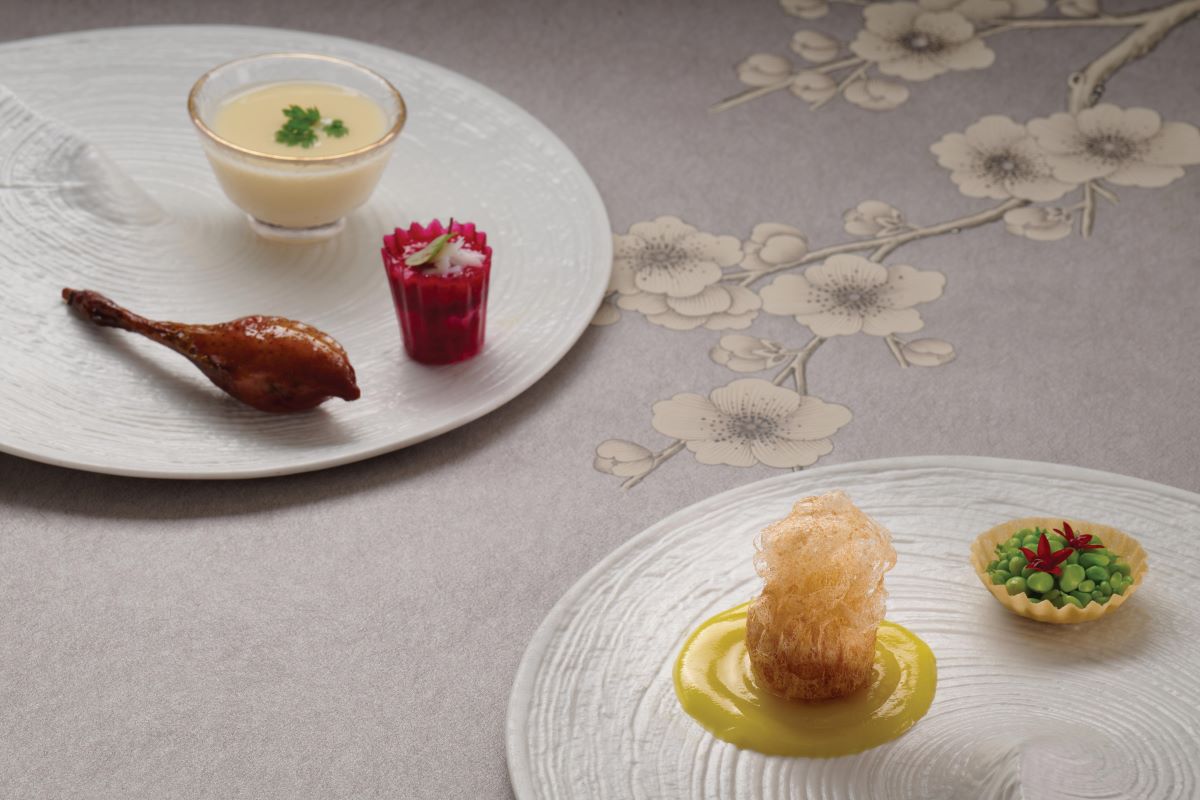As female artists continue to take Hong Kong by storm, Merrill Wagner’s solo show at David Zwirner provides a rare overview of a uniquely inventive and enduring career. Jaz Kong takes a stroll through the 89-year-old’s world
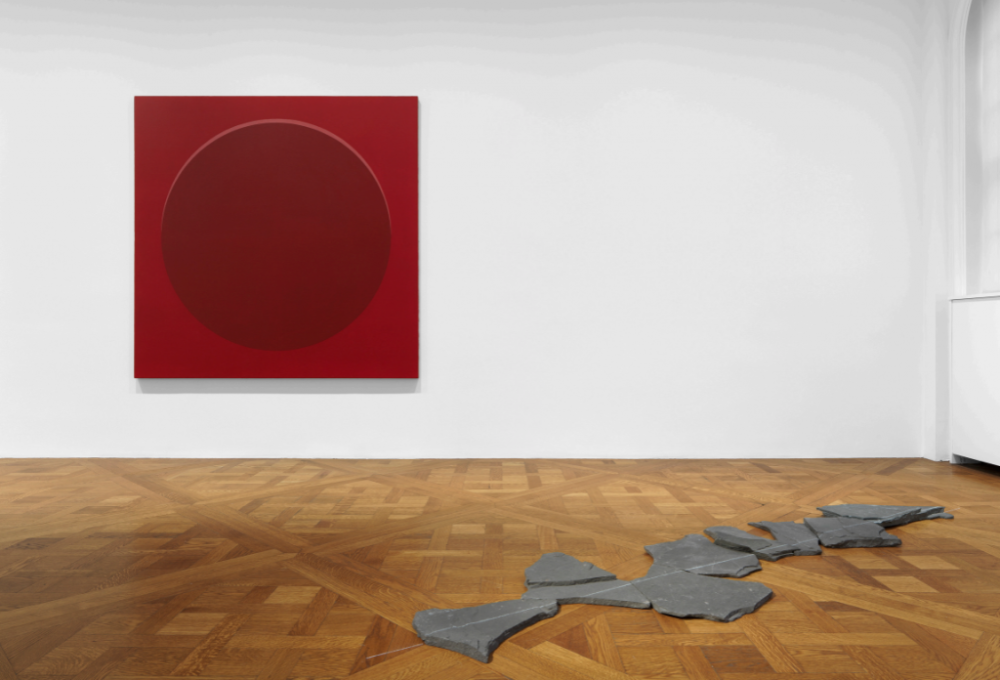
Gallery shows and artworks by international female powerhouses have become a frequent sight in Hong Kong – and many in the city are still clamouring for more. In the first half of 2024, we had rebel queens Marilyn Minter (sadly it wasn’t a solo show but there were talks and sharing sessions) and Maggi Hambling, and among younger voices we had Louise Giovanelli and Kylie Manning. This has indeed been a good year for art lovers in Hong Kong who appreciate a show that is paradigmatic yet provocative, and David Zwirner is starting the second half of the year in similar fashion.
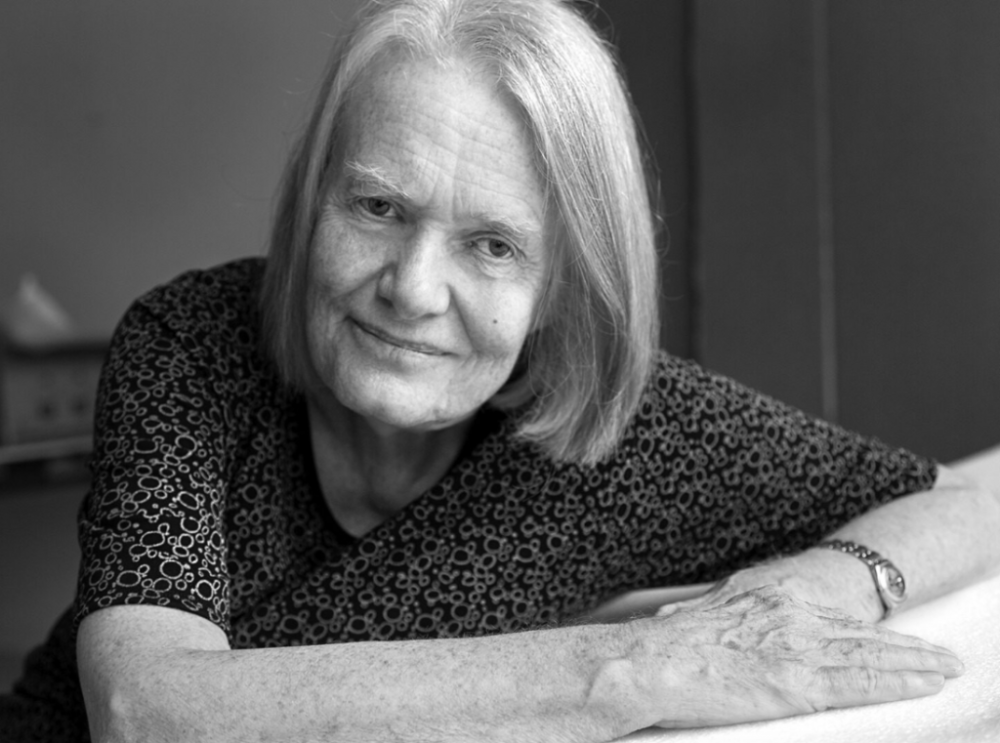
On display until August 2, Nature is American artist Merrill Wagner’s second solo show with the gallery since the announcement of her representation in 2021, and her first in Greater China in nearly 15 years. The show is symbolic, serving as a small retrospective of her career as well as a window into a period of art history when minimalism and post-minimalism were not exactly arm in arm with abstract expressionism and topics such as female artists and feminist movement were intense and evolving.
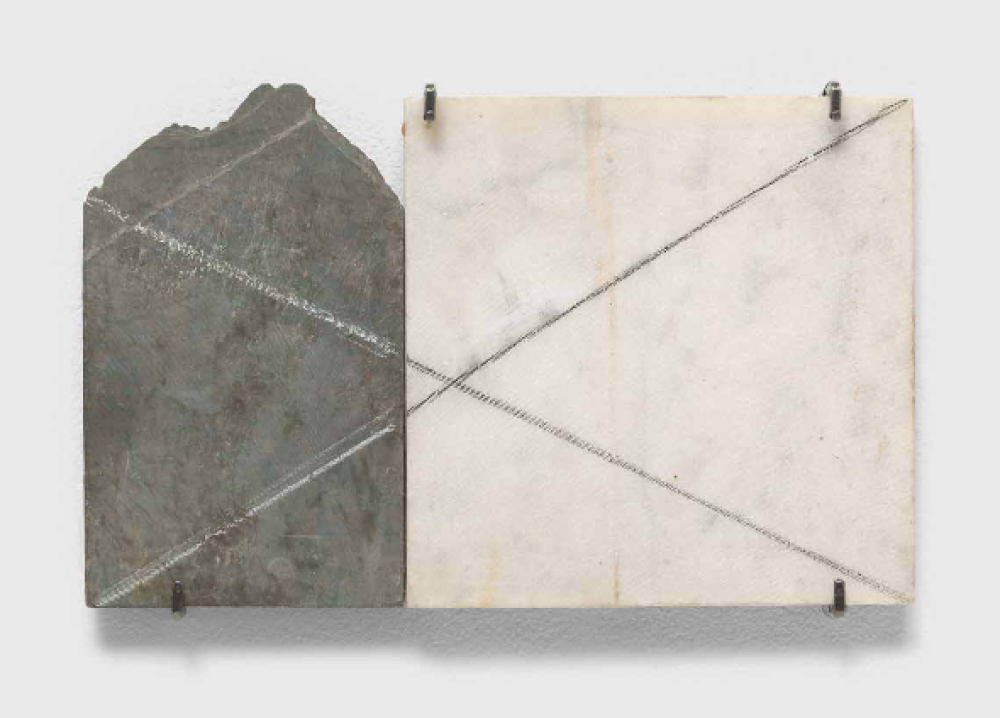
Born in 1935 in Tacoma, Washington, Wagner was one of the most significant artists who witnessed, rejected, then somehow embraced minimalism and post- minimalism with her style, and mixed them with her way of abstract expressionism to create iconic works across a wide range of media. Materials that she has played with range from canvas, paper, slate and stone to plexiglass and steel. Nature is a microscope into Wagner’s mind, which is an “unusual marriage of science and poetry”, according
to the New York Studio School.
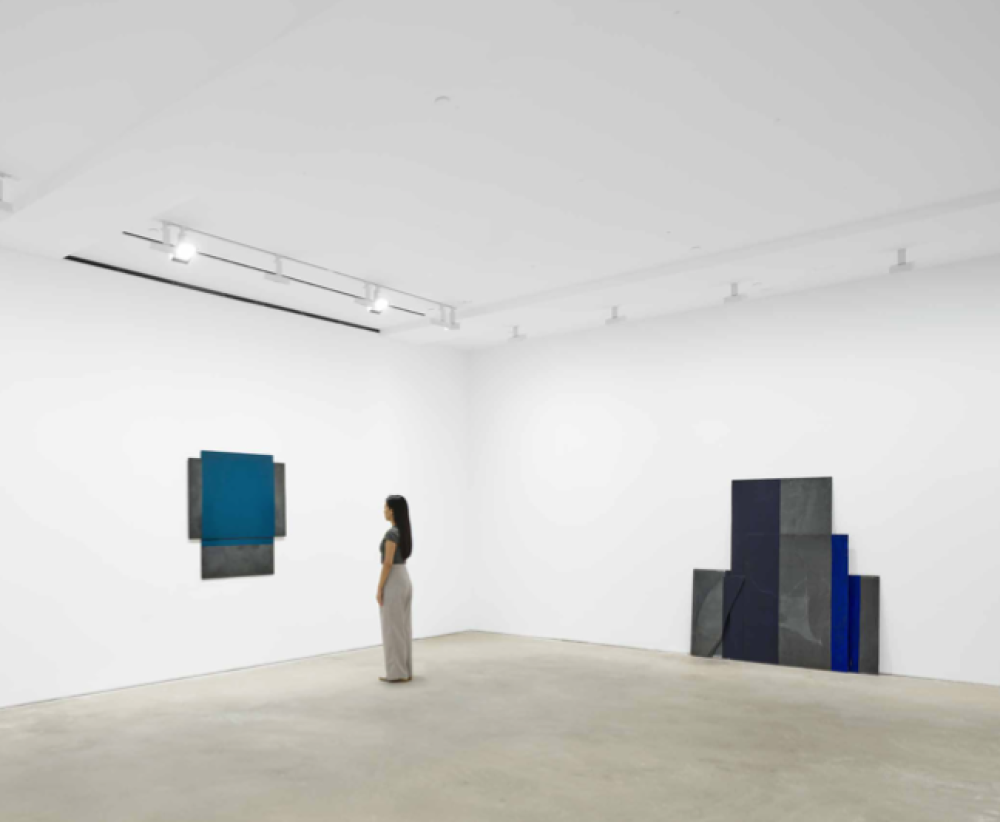
Visiting the show is a good way to learn more about Wagner, and another way is through Susan Dunne’s words. Dunne is currently the senior director of David Zwirner New York and has worked with the Ryman estate for over 30 years. As a friend and dealer who is familiar with the artist couple Robert Ryman and Merrill Wagner, Dunne agrees that “the exhibition as a whole is representative of Wagner’s career. I believe that Merrill was extremely inventive as an artist and always challenged herself in terms of procedure and medium. It was rare for women artists in her time to use materials that the male artists were using. She brought steel plates and sheets of slate to the studio. She worked out of doors in both public and private spaces to mark the passing of time in nature.”
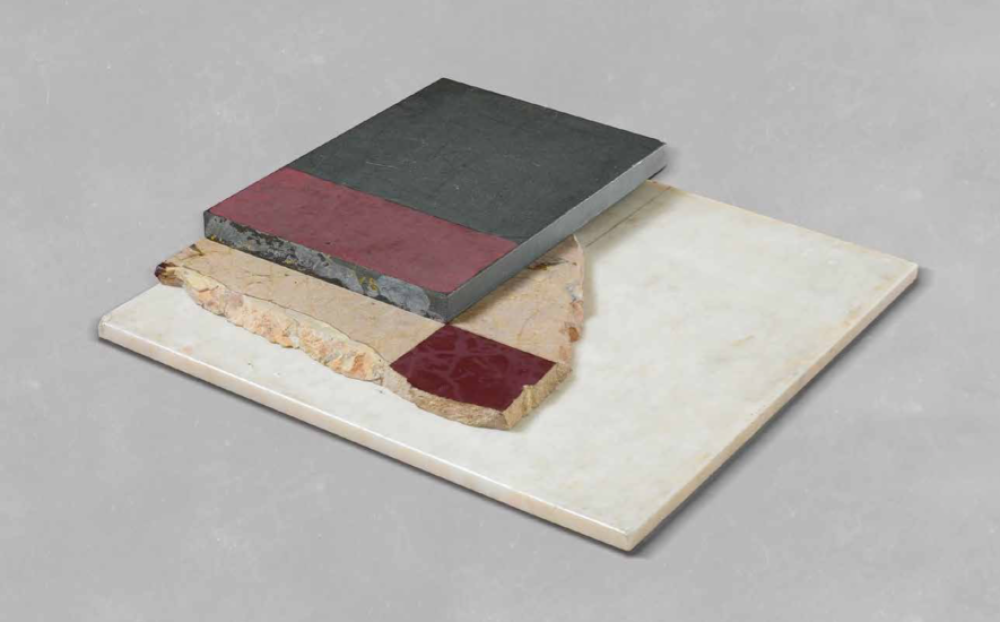
Nature is the perfect name for Wagner’s solo show, because mountains, trees, plants and the sea were a huge part of her upbringing. “Merrill sees nature in a time-based way,” Dunne says. “She sees the fleeting moment and works to depict it regardless of technique. Growing up in the Great Northwest gave her an intimate knowledge of and understanding of the power of nature. She spent a great deal of time outdoors and on the water. Watching the seasons change and the colours became embedded in her. She developed an appreciation for the random acts of nature that leave a lasting mark.”
Wagner moved to New York in the late 1950s, and during her time at the Art Students League from 1959- 1963 was trained under Edwin Dickinson and George Grosz. “Everything was sacred,” she once said of learning from Dickinson, which was “to learn a way of thinking, seeing, making in which everything is regarded as profound.” Hence, in the early stage of her creative career, she produced a number of geometric abstractions using large canvases, hard edges and bright contrasting colours.
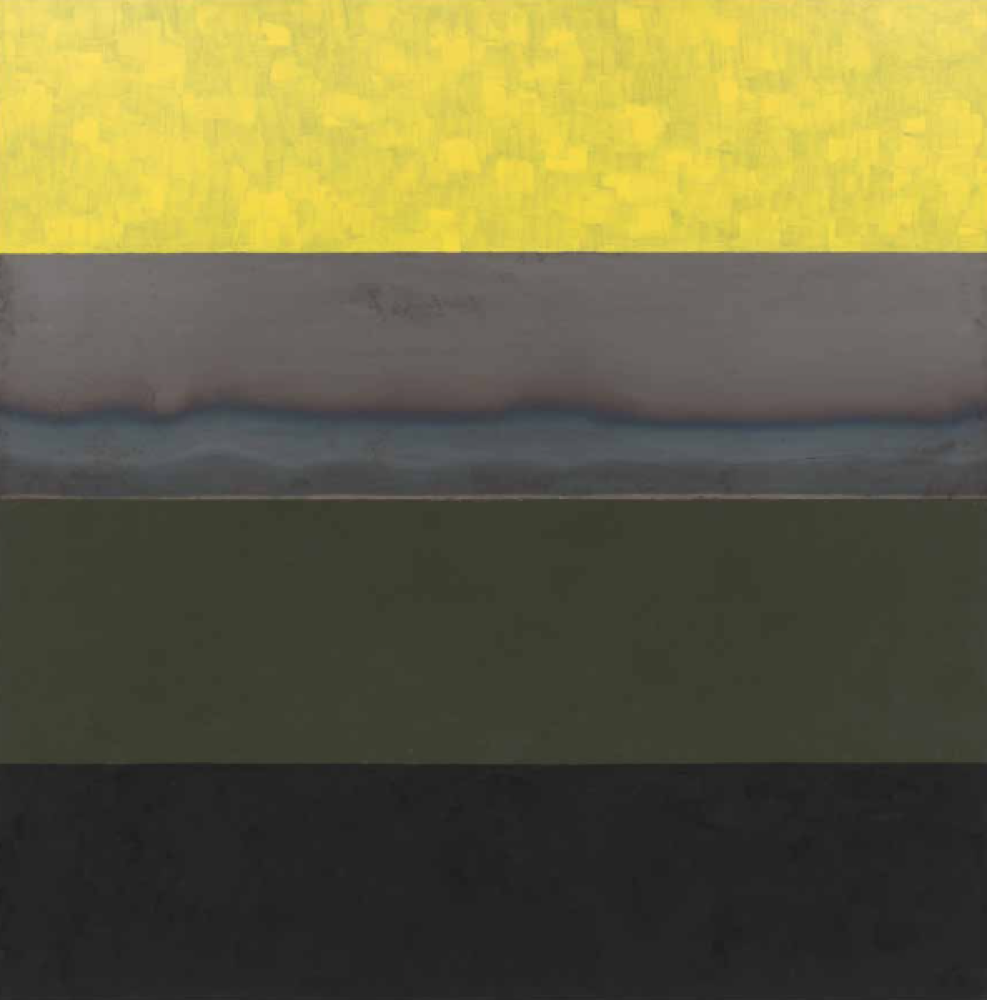
Among the earliest works in Nature, an Untitled monochromatic hard-edge painting from 1966 is an example of the early Wagner period. It features a large circle delineated with a thin, curving line set against a uniform ground. This composition can be read simultaneously as a study in colour and form, and also a waning moon, introducing the coexisting dualities that would come to characterise Wagner’s oeuvre.
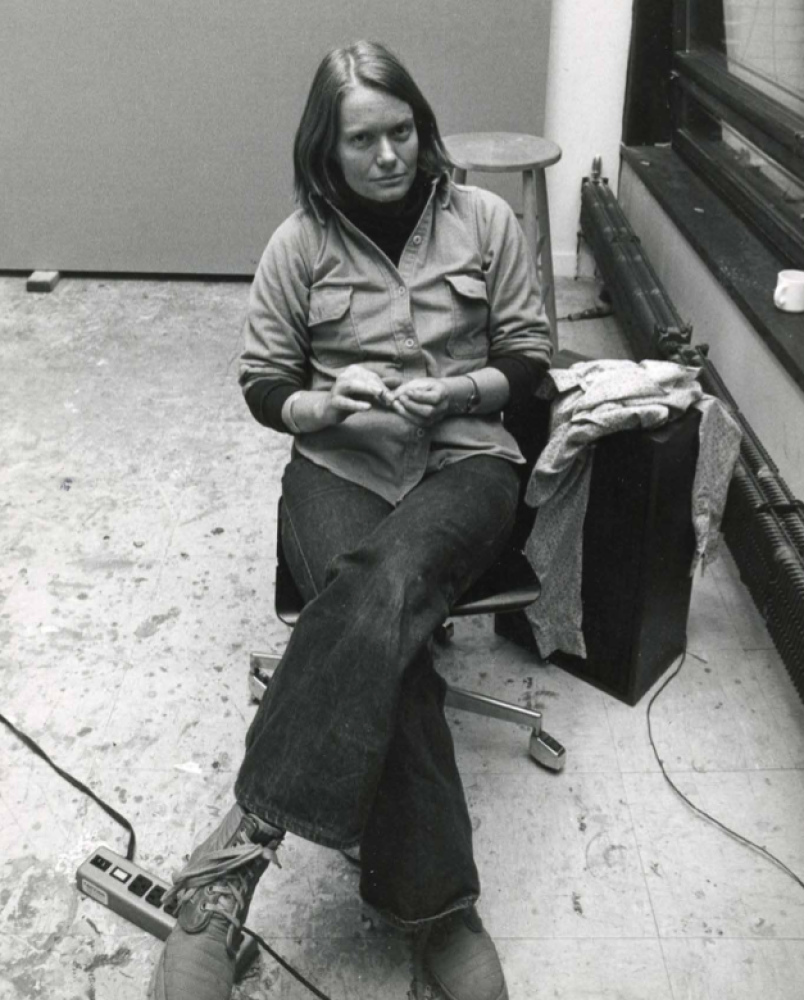
In the late 1960s, inspired by Eva Hesse, Wagner started to experiment with different materials by exploring textures, patterns and the ways different media would sit on top of or repel one another, and this fire and adventurous spirit is still burning in Wagner to this day. In an old Wall Street Journal article, her sons recalled a time when Wagner would take them around the city in her old Volkswagen van to scavenge construction sites for materials, such as the slabs of concrete and boulders she’d use as her canvases. Wagner loved the materials as they were, without altering them or taking away the traces of time and nature. One of the most impressive plays and displays of materials was Knoll, a work with oil pastel on slate blackboard panels that Wagner did in 1982.
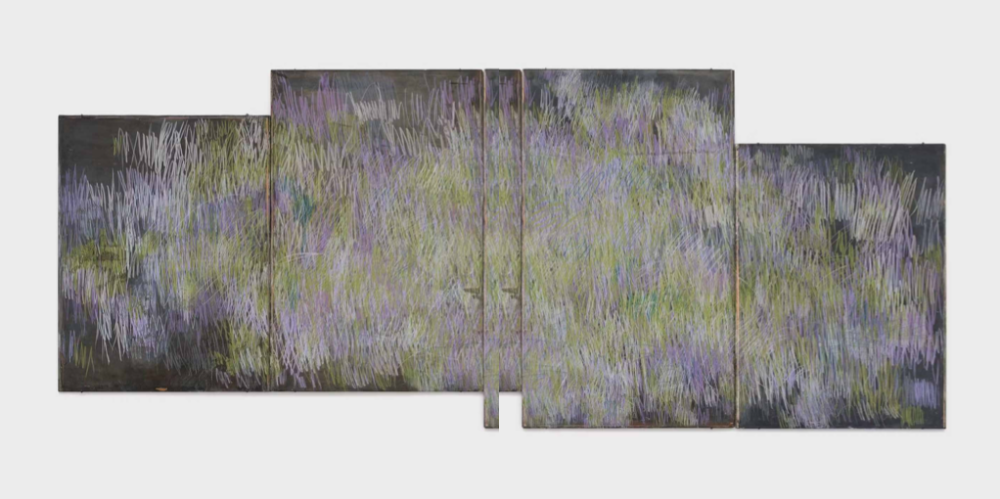
Dunne describes Wagner as someone who is “full of energy and ideas” and these aspects of her personality become evident when one enters David Zwirner’s Hong Kong space. The steel painting titled Assertion, the slate and marble 2 Brands of Mars Violet and the figurative landscape painting Untitled (#8) are some of Wagner’s many interpretations of “nature”, whether inspired by the natural or man-made materials she found, or a beautiful scene that had imprinted in her memories. “I think that Merrill kept true to her interests and investigations, which were always representative of her fascination with nature,” Dunne explains. “She experimented in this area with both composition and surface but her primary motivation remained the same. Merrill moved between the two styles seamlessly. Both were expressions of nature and her surroundings.”
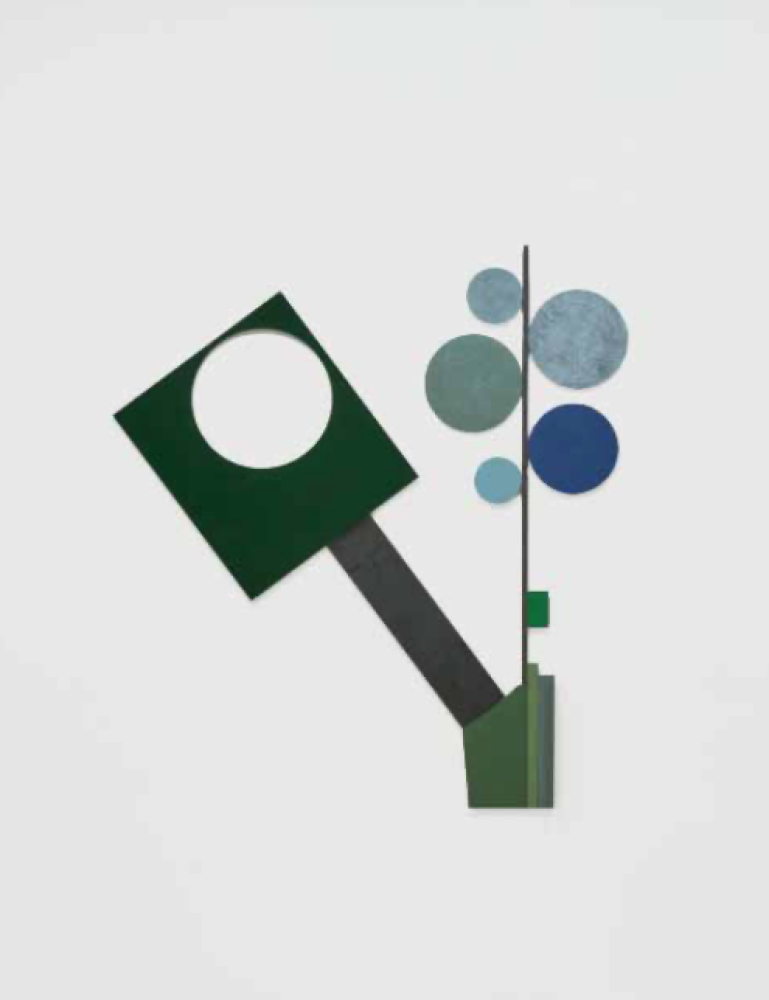
Some artists have distinctive styles for various creative periods but that is not the case for Wagner,
whose smaller oil landscape paintings were not products of a “phase”. “The figurative paintings are an immediate response to the passing of time as illustrated in nature. She is capturing a moment with each work, not to be repeated exactly the same. These have a direct connection to the abstract paintings she has done on fences, rocks and walls,” Dunne says. Working in both abstract and figurative registers, the artist moves seamlessly between these different modes of expression that for her are linked in both form and content to the natural world, each in turn informing the other.
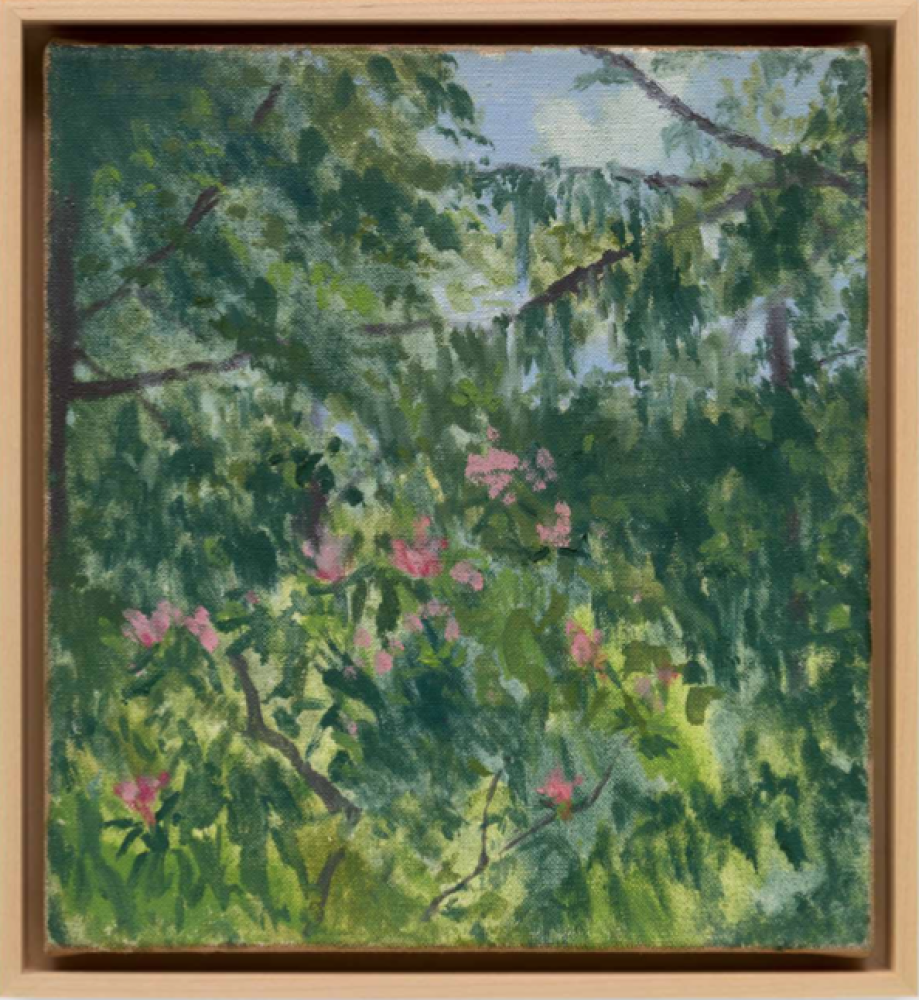
In one of the notes written by the gallery, it was mentioned, in an emotional and practical way, that “human existence, she learned early on, is fragile and marginal beside the power and grandeur of the natural world”. It was exactly her passionate view about humans that let her stand out during the feminist movement in the 1960s that coincided with the early stage of her career. One of the most important shows she participated in, and put her in the map of the contemporary art scene, was Twenty Six Contemporary Women Artists, curated by Lucy R. Lippard at the Aldrich Contemporary Art Museum in Connecticut in 1971.
When interviewed for a book titled More Than Minimal: Feminism and Abstraction in the ’70s, Lippard recounted, “I think the show may have been the first institutional all-women show in the framework of new feminism. Some people (mostly women), however, were beginning to be able to perceive the elements of women’s lives beneath the surfaces of women’s work, to recognise the ways this work differed from men’s work that might look superficially similar.” As mentioned in the introductory chapter, “It was a generation of ‘more’, as we consider female artists’ embrace of abstraction as a representation of female subjectivity, we must also refer to the contexts of ‘minimalism’ and ‘feminism’ as historical experiences rather than stylistic categories.” Wagner’s works were again part of the Aldrich Contemporary Art Museum’s 52 Artists: A Feminist Milestone group show in 2022-2023.

Although abstract expressionism is not everyone’s favourite art form, Nature is still a worthwhile portrait
of time, and a summary of art and social movements over the past six decades. The show might help viewers comprehend the rapid changes around us, especially when it comes to new technologies and AI. As Wagner herself wrote in 1981, “Humanity may not survive. It seems foolish to assume without a doubt that it will… We are not equipped to solve the problems in our societies, and we will destroy ourselves with the solutions our minds have created. On the other hand, maybe it is possible that we really are clever enough to use our resources for the perpetuation of civilisation, rather than its extinction.”
While artists might not have the direct solutions, they can in fact provide insights to our future when faced with a potential repeat of history.
Also see: Loewe Foundation exhibits Japanese tea kettle craft at Asama Photo Festival 2024



